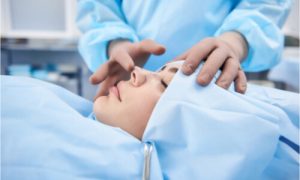Do you have a crooked nose that causes difficult breathing? If so, maybe you are a good candidate for septoplasty. Septoplasty is a medical procedure that can help improve your breathing by making a better airflow to the nose. It is an outpatient procedure, so most patients can go home after the surgery. Like any other post-surgical healing process, septoplasty recovery may need to strictly follow the doctor’s direction to secure proper healing and prevent complications. In this article, you will know why septoplasty is necessary, what to expect, and how to improve your recovery.
Issues With Nasal Septum
The nasal septum is the wall of bone and cartilage that separates your nose into two nostrils. When your septum is shifted to one side of your nose, a deviated septum occurs.
In fact, some individuals are born with a deviated septum. However, this crooked septum can also happen when you encounter an accident or injury to your nose.
The vast majority with this issue have one nasal passage that is a lot smaller than the other, which can be a reason for nasal obstruction or difficulty breathing. Other side effects of a deviated septum might include frequent nosebleeds and facial pain. The only way to fix deviated septum is through surgery.
Septoplasty For Deviated Septum: Why Is It Necessary?
People with deviated noses usually breathe into their mouths. This improper breathing process can cause dry mouth and a problem at night that can inhibit sleep.
Fortunately, septoplasty is the only surgical procedure that can help correct a deviated septum. It makes the septum straight, allowing for better airflow through the nose.
At times, septoplasty is part of other surgical procedures, including sinus surgery and the extraction of nasal tumours. Keep in mind this procedure alone cannot change the shape of the nose. However, this nasal surgery can be combined with septorhinoplasty, a noise-shaping surgery.
Septoplasty Procedure
Depending on the condition of your nasal cavity, a septoplasty may require 30 to 90 minutes to complete the procedure. The operation will not begin until the local anesthesia, or general anesthesia starts to work. The type of anesthesia will usually rely upon what you and your doctor choose is best for you.
In an average method, the surgeon cuts one side of your nose to get to the septum. Then, they lift up the mucous membrane, which is the protective covering of the septum. At that point, the surgeon moves the deviated septum into the proper position and remove any hindrances, such as excess nasal tissues, bones, or cartilages. The last thing your surgeon will do is to reposition the mucous membrane.
In addition, your surgeon may stitch the surgical site to hold the septum and membrane in place. Nevertheless, packing the nose with cotton is often enough to keep them in the proper alignment.
Surgery Follow-Up
After surgery, there will be some swelling and pain. They usually subside following a few weeks, yet it may require months to feel the full benefit of your septoplasty.
A follow-up appointment is essential to know the proper way to remove, dress, pack or splint the nose. Typically, this happens a day or two after the operation.
In addition, your doctor or surgeon will give you other directions for post-operative care such as:
- How to deal with the surgical area

- Taking prescribed pain medication
- Risks or other side effects that may require the attention of your doctor or surgeon immediately
- Avoid blowing your nose and lifting heavy objects
- Keep away from steroid nasal sprays for at least two weeks
- Avoid taking nonsteroidal anti-inflammatory drugs (NSAIDs) because of an increased risk of bleeding
- Do not take a shower for the first 24 hours
- Apply a cold compress treatment
- Use a saline nasal spray or sinus irrigation
- Sleeping with your head elevated to diminish nasal congestion and swelling
- Avoid dusty or smoking places and sick people to prevent complication
Recovery Timeline
Most patients recover well after septoplasty. Incisions will heal reasonably fast, and swelling and pain should diminish in a brief timeframe. However, complete healing of the treated septum might take significantly longer.
In addition, nasal tissue and cartilage can require three to six months to completely recover. Changes can even happen a year later. Also, problems like snoring or breathing issues can take time and differ from one to another. However, patients should still notice some improvements in the time after surgery.
Furthermore, if you have any concerns or notice you have a severe headache, pain, fever, nosebleeds, neck stiffness, or trouble breathing. Then, in that case, call your doctor right away.
Looking For A Reliable Surgeon?
Though a septoplasty is usually a simple reconstructive surgery, having a trained plastic surgeon is still necessary to assure a successful outcome. Our team of highly experienced professionals in Brisbane can provide cost-effective reconstructive and cosmetic surgery using modern surgical approaches and techniques. So if you have any questions or concerns about the treatment you want, feel free to call us at (07) 3186 8739 today!
References:
Deviated septum.
https://www.mayoclinic.org/diseases-conditions/deviated-septum/symptoms-causes/syc-20351710
Types of operations for nasal cavity cancer.
NSAIDs.


Recent Comments